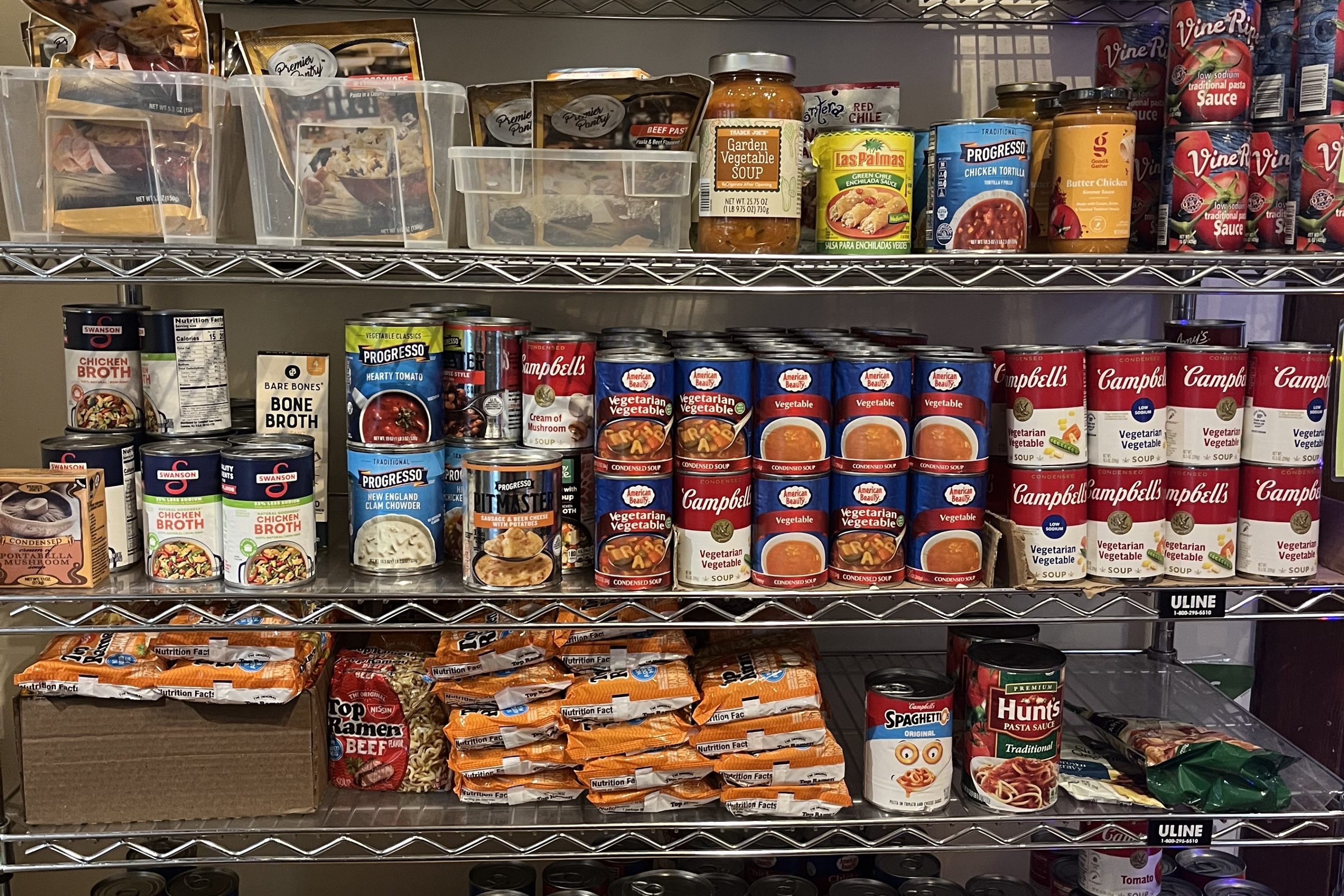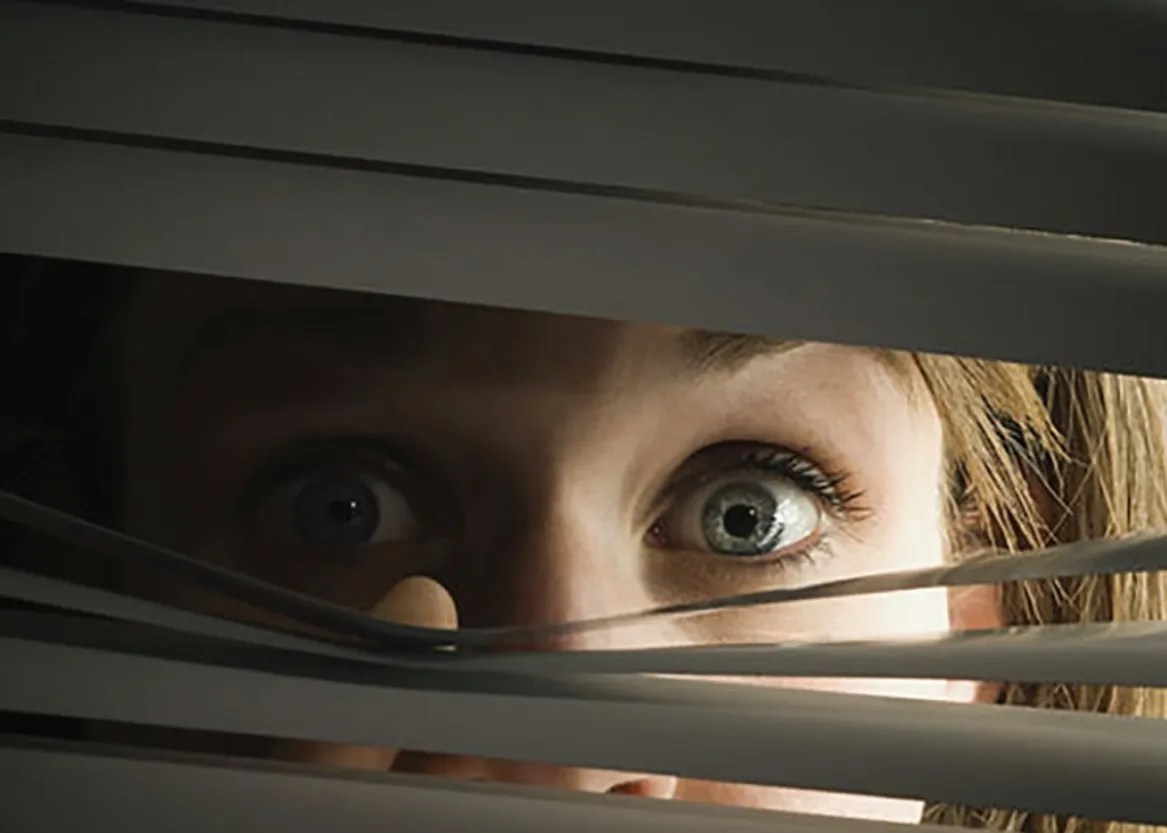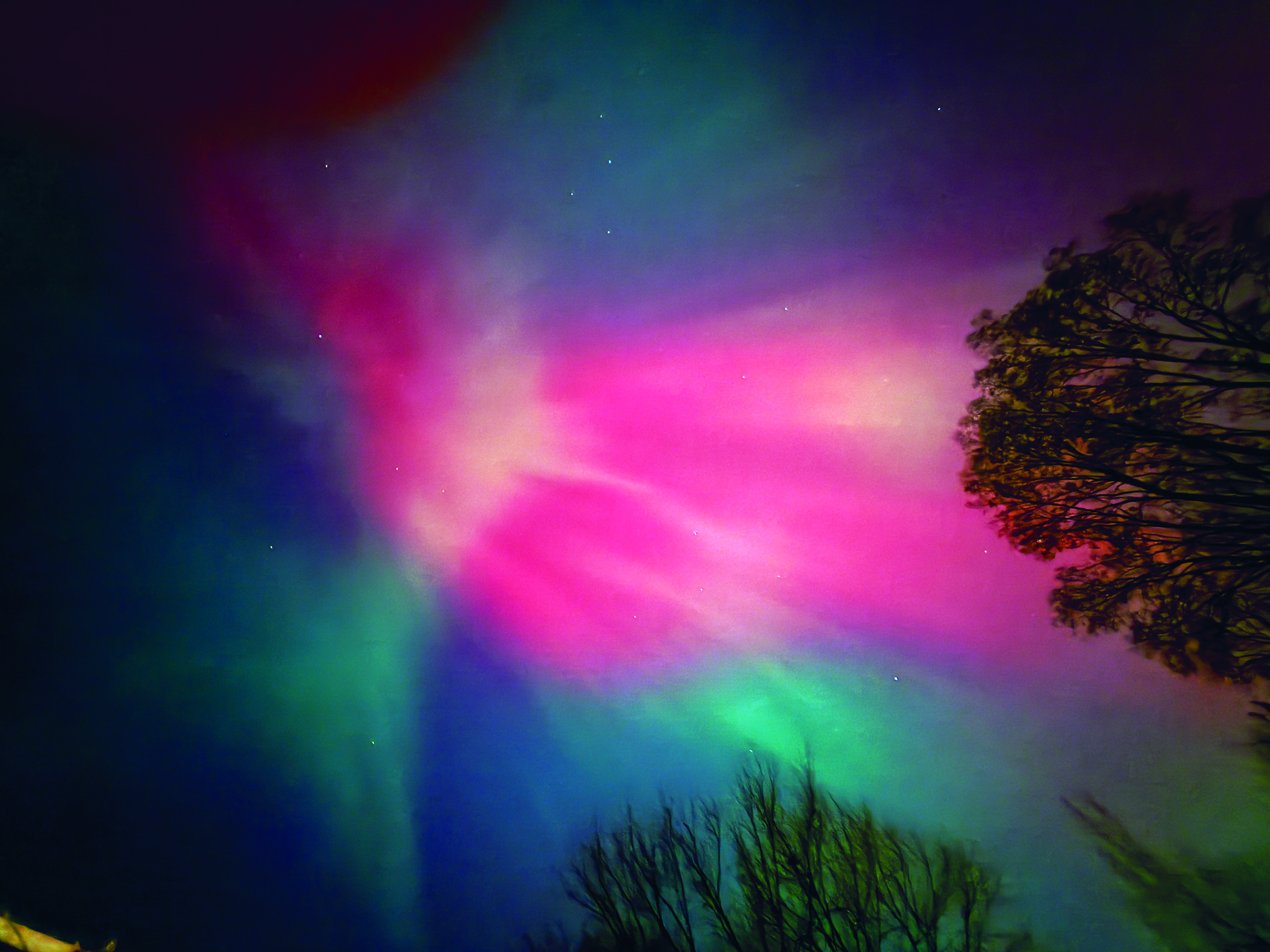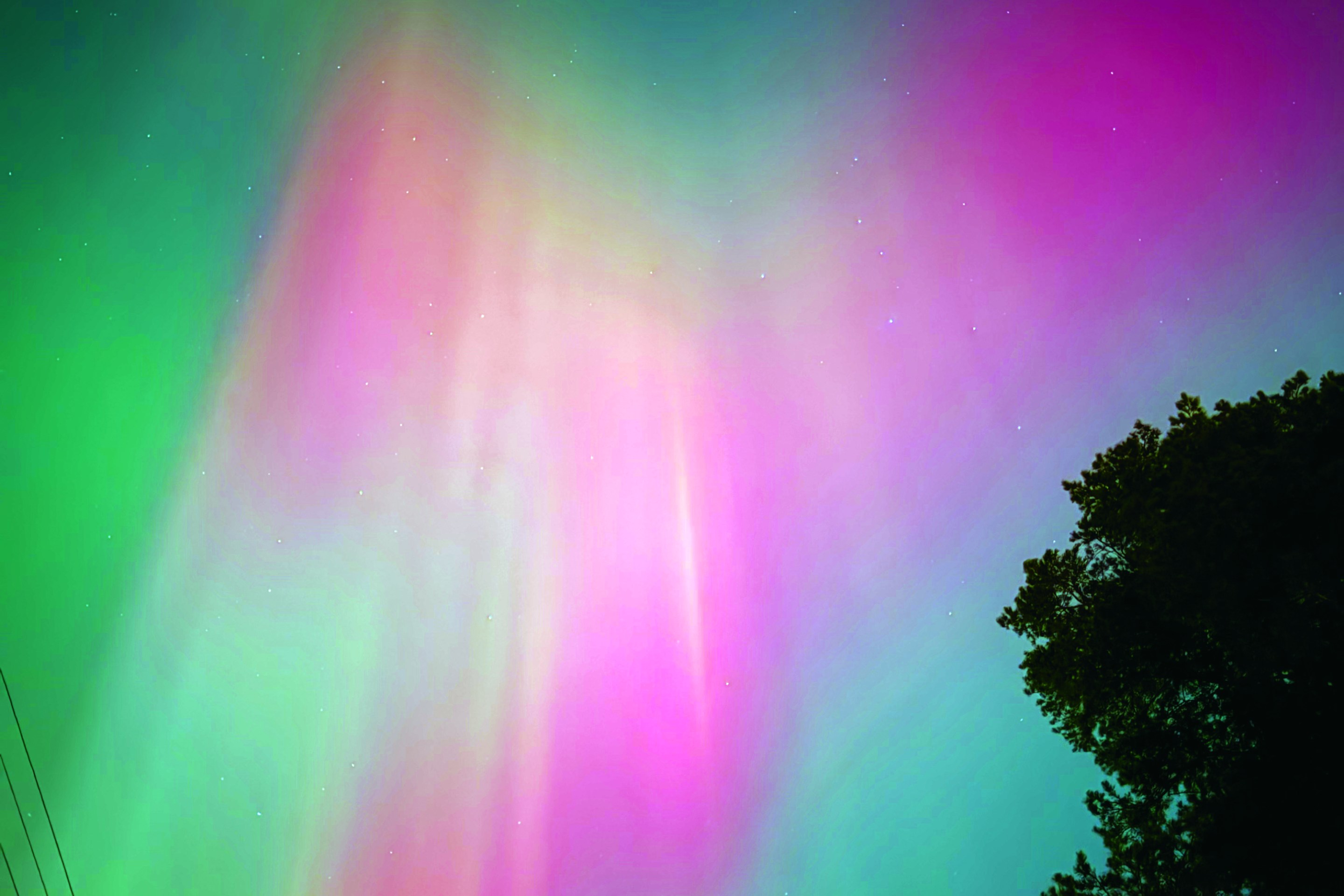My wife and I had never been to India, but it was always a place that captured our imagination. We celebrated our 30th wedding anniversary by taking a trip there in February. It was a three week small group tour (Odyssey Unlimited) that included seeing the “golden triangle” area and a flight to Varanasi, the place I most wanted to see.
Varanasi is reputedly the holiest city in India, that place on the Ganges where millions of Hindu pilgrims come to immerse themselves in the river, with funeral pyres burning on its banks. It was an amazing way to end our trip, but I must say, the first day may have been even better.
Just before we left for India, my daughter told us to watch “All that Breathes,” which won the Grand Jury Prize at Sundance and the Golden Eye award for top documentary in Cannes, both in 2022, and was nominated for an Academy Award in 2023.
It’s a quiet, reflective film, but one you won’t forget easily. Directed by Shaunak Sen, the film tells the tale of two brothers, Nadeem Shehzad and Mohammad Saud, as well as their friend, Salik Rehman, who work tirelessly to rescue and rehabilitate black kites.
These handsome raptors are members of the hawk family and survive mainly by scavenging scraps from garbage and meat-processing plants.
I was so impressed after seeing “All That Breathes” that I decided to take a chance and email the brothers at raptorrescue.org.
I was thrilled to receive a very positive reply from Nadeem. In fact, he said, we could visit them twice! The following week, after traveling for 24 hours, we touched down in Delhi at 3 a.m. Strolling out of the airport, the intense energy of the city surrounded us. It was the middle of the night, but it felt like day. The vast city was pulsing with color and sound. The only things that looked relaxed were the cows and monkey families grazing nonchalantly by the side of the road.
The next morning, as I sat by our hotel window recovering from jet lag, I noticed black shapes circling far above me in the hazy sky. These must be kites, I figured, and I was happy to see that you could spot them almost immediately.
They have fared better than Indian vultures, whose numbers have dropped by 90 to 98 percent. Many of the vultures died from kidney failure after eating carcasses contaminated with the non- steroidal anti-inflammatory drug diclofenac. The drug was banned for livestock use in 2006, but the vultures are only trickling back.
After lunch and a few cups of strong chai, we were ready to make our long Uber journey across Delhi to visit Wildlife Rescue, the site of Nadeem and Saud’s bird hospital. We got more excited the closer we got.
From the film, we recognized the reservoir where they had to swim (along with Salik) to rescue a kite. Their unpaved dirt street looked oddly familiar too. When the car pulled up and Nadeem walked out, I was honestly a little starstruck, the way you get when you actually meet someone you’ve only seen on film. Saud and Salik were right behind him, and we all exchanged greetings.
It was nice to have a chance to chat and drink tea before we toured the bird hospital. The success of their endeavor was stunning. Without having any veterinary training, Nadeem and Saud started the recovery effort in 2003; Salik started volunteering in 2010 and became their first employee in 2017.
So far, they have rescued about 33,000 birds in total, mainly black kites, but also some owls, vultures, and even pigeons. Although there are five other “bird hospitals” in Delhi, most of them refuse to treat meat-eating birds, which are considered unclean. The birds are brought to Wildlife Rescue from these hospitals as well as numerous other sources in the city.
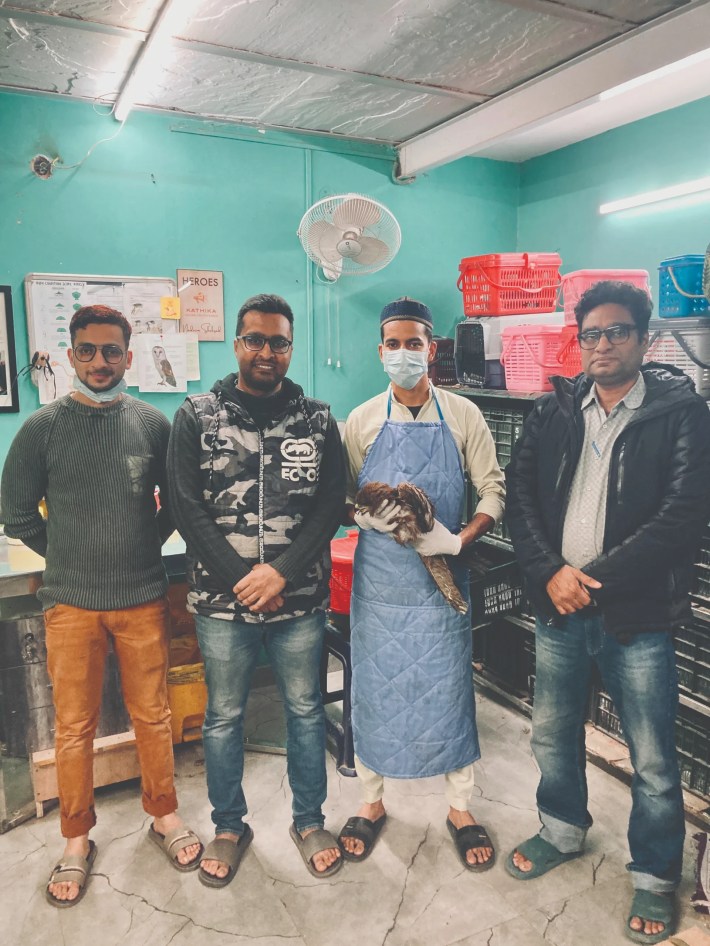
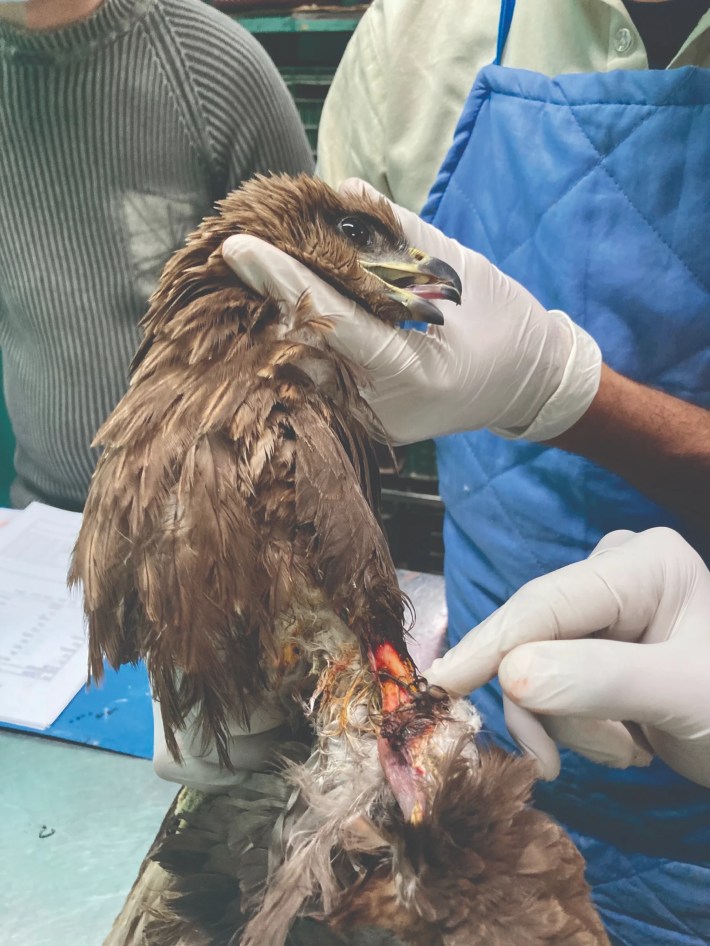
Why are the kites getting injured?
In India, as in about 12 other countries, paper “kite fighting” is very popular, especially at certain festival times. The string that is used is called Chinese manja; it is nylon cord coated with glue and powdered glass, which can instantly slice through their opponent’s paper kite string. Unfortunately, manja can also cause deep wing and chest wounds to airborne birds, primarily black kites. We were also told that about 20 human deaths are reported nationally per year, often among people on motorcycles who have severe neck lacerations. There is a movement afloat to outlaw using manja, but no national law has been passed yet.
We looked at a variety of birds that afternoon, some seriously injured and some in various stages of recovery. Saud has had no formal training, but his surgical skills have gotten more and more sophisticated, and he has pioneered some new techniques, which he has discussed at surgical meetings.
When the birds are healed, they can simply fly away through the tops of their enclosures, and can also fly back for a visit whenever they want. All of them get fed every day. It is hoped that a healed kite can return to scavenger duties: It is estimated that the kite population removes five to six tons of Delhi garbage per day.
Since the release of the documentary, Wildlife Rescue got a boost by receiving donations totaling about $50,000. The team is now able to treat more birds and can currently support five full time and two part time staff, including a veterinarian who comes in three to four times a week.
They try to keep their operating expenses low, but their expenses are still roughly $35,000 per year, and they do not receive government support. To make a living, the brothers still make soap dispensers in a different part of the basement, and most of their rehab work is done in the evenings. Their immediate goal for the hospital is to get an X-ray machine, and to have a small lab for doing blood tests. Donations would be much appreciated and can be made through www.raptorrescue.usa.
As we wrapped up our visit and said our “Namastes” to our hosts, I pondered what truly inspired this group of remarkable human beings. As Nadeem put it in the film, “Delhi is a gaping wound. And we’re a tiny Band-Aid on it.” I also sensed that they felt a real respect for all forms of life and could only imagine the sense of joy they felt when they released these birds back to the sky.


